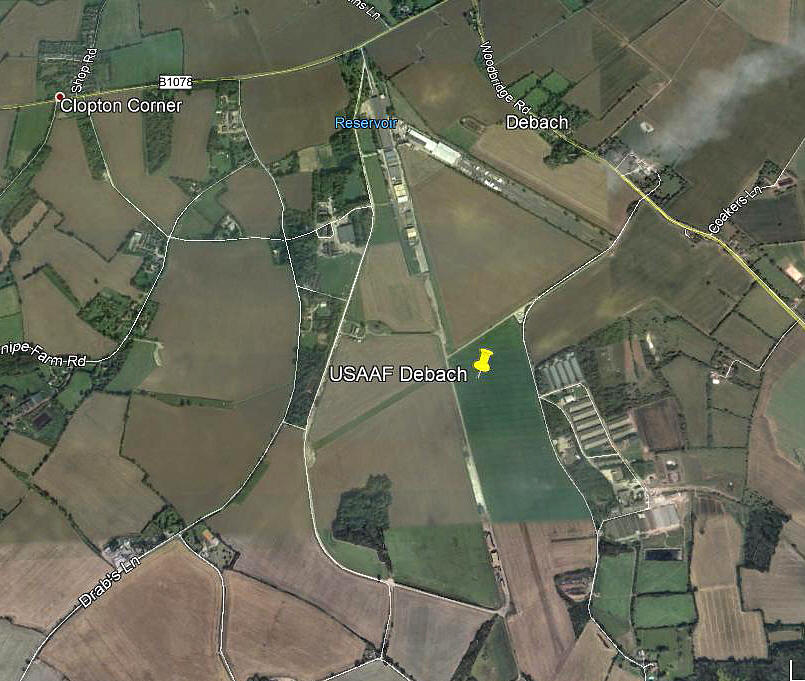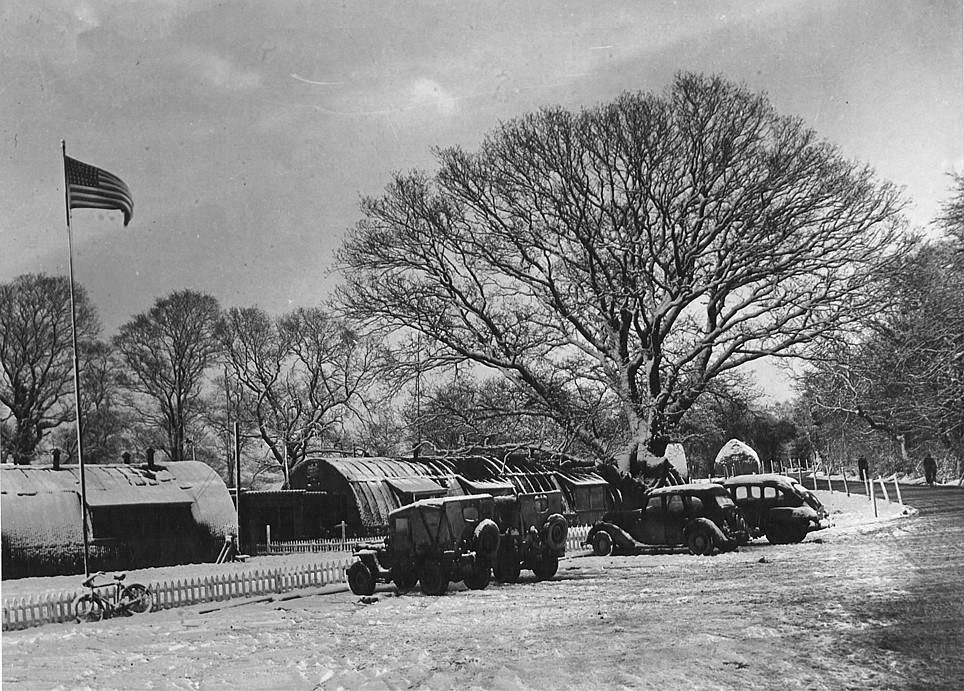Debach
DEBACH: Military aerodrome, much later private airstrip
Note: This picture (2017) was obtained from Google Earth ©
The present day airstrip can be clearly seen on the SW end of what was, in WW2, runway 07/25.
Military users: WW2: 8th USAAF Station 152
93rd Bombardment Wing 493rd Bomb Group
860, 861, 862 & 863 Sqdns (Consolidated B-24 Liberators, later Boeing B-17 Flying Fortresses from August 1944)
Location: 3nm NW of Woodbridge, just SW of Debach village and SE of Clopton Corner village
Period of operation: 1944 to 1945
Runways: WW2: 18/36 1829x46 hard 07/25 1280x46 hard
13/31 1280x46 hard
2011: 06/24 550 grass
2017: 06/24 485 grass
A MICHAEL T HOLDER GALLERY
Note: All items marked with an asterisk are from the American Air Museum.
"POP'S CAFE"
It is quite rare to find evidence such as this about the influence the arrival of the USAAF Eight Air Force had on the local population. Stories abound - but almost never with pictures and a map.
NOTES: This is yet another aerodrome I found so fascinating in researching this 'Guide'. In conversation at least I’d probably have insisted I’d never before heard of DEBACH a few years ago, although I had probably slightly noticed it in passing by when flying or driving in the region, because it is still shown as a disused aerodrome on current CAA charts! And, it was only operational for barely a year or so.
Even so records show that when fully up and running some 2894 USAAF personnel were based here in late 1944. It appears that DEBACH was the last wartime bomber airfield to be built for the USAAF, and the first operations took place on D-Day.
However, perhaps worth mentioning, being built by the 820th Engineer Battalion (Aviation) U S Army during 1943/44, by the end of 1944 the runways were in such poor condition that they had to move to RAF LITTLE WALDEN to enable the runways to be repaired and strengthened.
SOMETHING REVEALED?
One thing that has been revealed in producing this ‘Guide’ is the gleaning of some sense of what WW2 really entailed. In the UK we are still, over seventy years later, (in 2016 that is), presented with a very distorted picture, packed full with empty sentiment and propaganda etc.
To illustrate this I’d like to quote a couple of abridged passages from Bomber Crew by John Sweetman, a book I’d highly recommend reading. “With command of the air and ample protection from 8th USAAF Fighter Command, American bombers flew 88,011 day sorties in the final three months of the war for the loss of 404 aircraft.” Compare this: “During the seventeen weeks from 1 January 1945, Bomber Command operating by day and night flew 62,824 sorties.” But, RAF Bomber Command lost 711 aircraft.
Why? It is often claimed the RAF elected to fly many of the more dangerous missions. A tradition kept up in the first Gulf War in later years it appears, and in other modern conflicts. If this is correct, why exactly?
A MUSEUM
Today a museum exists on the site and many WW2 buildings restored. In 2011 two fly-ins took place.
We'd love to hear from you, so please scroll down to leave a comment!
Leave a comment ...
Copyright (c) UK Airfield Guide






























